DAS HEILIGE TAL DER INKAS
Die Landschaft hat sich komplett verändert seit wir die Anden verlassen haben. Damit meinen wir nicht etwa die fehlenden Berge oder den Pazifik, an dem wir seit Stunden parallel auf der «Panamericana» entlangfahren. Es ist die karge und trockene Wüsten-Landschaft über die wir staunen. Wir haben schon von den Sanddünen an der peruanischen Küste gehört, aber über wie viele hunderte Kilometern sich diese hinziehen war uns nicht bewusst.
GEFÄHRLICHES LIMA
Wir erreichen die Hauptstadt und freuen uns, diese in den nächsten Tagen zu erkunden. Gleich am ersten Abend besuchen wir eine der vielen «Cevicherias» und bestellen das Nationalgericht roher Fisch in Limettensaft mit Zwiebeln und Tomaten angereichert. Lima gilt unter Kennern als kulinarische Metropole und wir planen daher noch den einen oder anderen Restaurant-Besuch. Aber wie so oft kommt es anders als man denkt… Nach der Rückkehr vom Abendessen stellen wir fest, dass uns ein Solarmodul vom Dach gerissen und gestohlen wurde und dies obwohl wir unser Fahrzeug auf einem bewachten Parkplatz mit Kameras und Sicherheitspersonal abgestellt haben. Natürlich haben wir im Vorfeld von den Gefahren in Lima gehört und gelesen und deshalb – so dachten wir zumindest – entsprechende Vorsichtsmassnamen getroffen. Aber weder der Wachmann will etwas gesehen haben noch hat die Kamera gefilmt und überhaupt «ob wir nicht schon vorher bestohlen worden seien»… Und wir sind nicht die Einzigen! Wir treffen eine französische Familie deren ganzes Wohnmobil während einem Einkauf im Supermarkt ausgeräumt wurde und einem deutschen Pärchen wurde der Rucksack aufgeschnitten und das Portemonnaie gestohlen. Das ist dann doch zu viel des Guten und wir beschliessen kurzerhand nur noch unsere Vorräte in einem der gut sortieren Supermärkte aufzufüllen und der Grossstadt früher als geplant den Rücken zuzukehren.
NOCH MEHR SAND
Erneut fahren wird durch eine Sandlandschaft, aber diesmal sind wir darauf vorbereitet. Schliesslich liegt unser Ziel mitten in eben diesen Sanddünen. Es ist die kleine und etwas touristische Lagunen-Oase «Huacachina» wo wir die nächsten Tage verbringen wollen. Tagsüber brennt die Sonne so unbarmherzig vom Himmel, dass wir den Pool unseres Stellplatzes geniessen aber sobald der Feuerball tiefer steht, ziehen wir Socken und Schuhe an – der heisse Sand brennt einen sonst Blasen in die Fusssohlen – und entdecken die Mini-Sahara zu Fuss, mit der Drohne und einmal mit einer Buggy-Tour. Wie ein Wahnsinniger rast der Fahrer die Dünen hoch und runter so dass wir uns wie auf einer Achterbahn fühlen und nur dank der straff gespannten Sicherheitsgurten im Sitz verbleiben. Bei einem der Foto-Stopps mit toller Aussicht ganz oben auf dem Dünenkamm erhalten wir dann ein Sandboard in die Hände gedrückt und ein paar kurze Instruktionen zu dessen Benutzung. Die wichtigste Regel dabei ist «den Mund unter allen Umständen und zu jeder Zeit geschlossen zu halten»… Wie gut tat danach aber die ausgiebige Dusche. ?
ZURÜCK IN DIE BERGE
Irgendwie haben wir sie fast vermisst, die kurvigen Strassen durch die Anden und spätestens am zweiten Tag stellt sich ein Gefühl der Vertrautheit ein… Jawohl, wir haben der Küste Lebewohl gesagt und sind unterwegs nach «Cusco», dem Zentrum der Inka-Kultur in Peru. Auf dem Weg dahin machen wir einen kleinen Umweg um die «Aguas Turquesas» von Millpu zu besuchen. Diesen Geheimtipp haben wir von einer Mitreisenden vor langer Zeit erhalten und nach einer zweitägigen Anfahrt über holprige Pisten wissen wir auch wieso dieser smaragdgrüne Bach nicht oft besucht wird… Dank heutiger GPS-Technologie ist dieser zwar leicht zu finden aber alle Technik lässt uns nicht schneller ankommen. Wir haben aber Glück, genau als wir unser Expeditionsmobil parken und loslaufen, reissen die Wolken am Himmel auf und kurze Zeit später lassen wir uns von der prächtigen Farbe des Baches verzaubern.
ALTE INKA-HAUPTSTADT
Nach drei weiteren Fahrtagen quer durch die Anden mit zig-tausend Kurven und einigen Passüberquerungen erreichen wir «Cusco». Wir campen etwas ausserhalb der ehemaligen Inka-Stadt die heute von den vielen Überresten des ehemaligen Königreichs profitiert und diese stolz und herausgeputzt präsentiert. Wir lassen uns durch die engen Gässchen und über Plazas treiben und gönnen uns zum Sonnenuntergang jeweils einen «Pisco Sour», das Nationalgetränk in Peru. Es ist ein Destillat das im Unterschied zum italienischen Grappa nicht aus dem Trester, sondern aus Traubenmost hergestellt und vorzugsweise mit geschlagenem Eischnee, etwas Zucker und Limettensaft auf Eis serviert wird. Wir finden jedes Gramm der sechs bis acht Kilo (!) Trauben pro Liter sind gut investiert – Prost! ?
Dann erhalten wir eine Nachricht von Leah und Karl und erfahren, dass sich unsere Freunde die wir im Norden von Perus vorzeitig ziehen lassen mussten, in der Nähe sind. So verweilen auch wir nicht länger, verlassen «Cusco» und machen uns auf ins heilige Tal.
VALLE SAGRADO
Was für eine Wiedersehensfreude als wir die Beiden in die Arme schliessen und bei einem gemütlichen Abendessen tauschen wir die Erlebnisse seit sich unsere Wege getrennt haben aus. Anschliessend schmieden wir Pläne für die Erkundung des heiligen Tals. Zusammen besuchen wir ein paar der vielen Inka-Ruinen in der Gegend und staunen dabei über die riesigen, gut erhaltenen terrassierten Hänge auf denen die Inkas nicht nur gewohnt sondern auch Landwirtschaft betrieben haben. Um ein eigenes Mikroklima zu schaffen, haben sie in den Ruinen von «Moray» ihre Felder als kreisförmige Terrassen gebaut. Damit steuerten die Inkas die Bewässerung effizienter und erreichten einen Temperaturunterschied von bis zu 15 Grad Celsius zwischen der obersten und untersten Terrasse mit dem Vorteil, dass oben und unten unterschiedliche Pflanzen gediehen.
Im Gegensatz zu den Felder werden die Salz-Terrassen der «Salinas de Maras» auch heute noch genutzt. Eine Kooperative im nahe gelegenen Dorf entscheidet über den Salzabbau und darüber wann welche Pools mit dem extrem salzhaltigen Wasser aus der unterirdischen Quelle versorgt wird. Jede Familie baut nach dem Austrocknen eben dieser Pools das Salz eigenständig ab. In der Regenzeit liegen die ganzen Salzbecken aber brach erklärt man uns, da das Süsswasser das in Form von Regen vom Himmel fällt den Salzabbau verunmögliche.
DER HEILIGSTE ALLER BERGE
Ganz am Ende des heiligen Tals, nicht einmal durch eine Strasse mit der Zivilisation verbunden, liegt einer der heiligsten Orte der Inkas, der berühmte «Machu Picchu». Seit Wochen diskutieren wir, ob wir diese Inka-Stätte in Erinnerung behalten sollen wie wir sie vor 10 Jahren bei unserem ersten Besuch erlebt haben. Der stetig wachsende Besucheransturm seit der Ernennung zu einem der 7 neuen Weltwunder war der mystischen Stimmung bestimmt nicht zuträglich… Wir ergattern aber kurzfristig Tickets für den frühestmöglichen Zutritt bei Sonnenaufgang und so steigen wir in den Panorama-Zug nach «Aguas Calientes», dem Tor zum Machu Picchu. Wir staunen über die Anzahl Hotels und die Menschenmengen in den Restaurants, dabei ist aktuell nicht einmal Hochsaison… Wir geniessen die Vorzüge der auf den internationalen Tourismus ausgelegten Infrastruktur, essen in einem französisch-peruanischen Restaurant und gönnen uns ein italienisches Eis zum Nachtisch. ? Dann geht es früh ins Bett denn um 4 Uhr morgens stehen wir bereits an der Bushaltestelle und schaffen es tatsächlich an Bord des ersten Buses. Eine halbstündige Fahrt durch die Dunkelheit lässt uns nur erahnen, wie steil die Serpentinen sind. Oben angekommen erhalten wir nach einer strengen Zutrittskontrolle mit Ticket und Pass grünes Licht und laufen die letzten Meter hoch zum berühmten Aussichtspunkt. Als dann die Sonne hinter uns über den Horizont steigt und die alte Inka-Stadt in ein goldenes Licht taucht, bereuen wir nicht ein zweites Mal hergekommen zu sein. Es ist definitiv ein magischer Ort und ein majestätischer Anblick und wir geniessen die Ruhe vor dem grossen Menschen-Ansturm. Nur drei Stunden später präsentieren sich die Ruinen nicht nur sprichwörtlich in einem ganz anderen Licht. Wie Ameisen laufen überall hunderte von Besucher umher und wir beschliessen, dass für uns die Zeit gekommen ist den nun nicht mehr ganz so magischen Ort zu verlassen.
REGENBOGEN-BERGE
Nach so viel Kultur und Geschichte zieht es uns zurück in die Natur. Was wir noch nicht wissen, unser nächster und gleichzeitig einer der letzten Stopps in Peru soll ein absolutes Highlight werden. In «Cusco» haben wir in den Reiseagenturen immer wieder Bilder von einem «Montaña Arco Iris» – einem Regenbogen-Berg – gesehen. Dank unserem Zuhause-auf-Rädern sind wir weder auf Transport noch Unterkunft angewiesen und machen uns eigenständig auf den Weg. Es ist nicht ganz einfach hinzukommen, die letzten Kilometer sind erneut holprig, steil und unser Motor kämpft um jedes bisschen Sauerstoff. Schliesslich befinden wir uns als wir den Parkplatz erreichen einmal mehr auf 4800 Meter. Wir packen unsere Rucksäcke mit Verpflegung, Wasser und einer dicken Daunenjacke und laufen los. Was wir dann nach einem nicht mal langen aber sehr anstrengenden Aufstieg zu sehen bekommen ist wahrhaftig grandios! Es ist ein Bergrücken der in der Sonne in allen möglichen Farben schimmert und nur eine kurze Wanderung zum nächsten Aussichtspunkt gibt den Blick in ein rot-grünes leuchtendes Tal frei. Es sieht aus als hätte die Natur mit dem Farbkasten experimentiert und wir können uns daran kaum satt sehen! Es gefällt uns derart, dass wir kurzerhand beschliessen einen Umweg zu machen um einen zweiten, weniger bekannten Regenbogenberg anzuschauen. Auch hier werden wir nicht enttäuscht: statt einem Bergrücken gibt es hier gleich mehrere die aussehen als wäre ein Regenbogen vom Himmel gefallen und hätte den Boden eingefärbt. Um es gleich vorwegzunehmen, einige der bild-gewaltigen Ausblicke werden in unserem nächsten Film zu sehen sein ? Bis dahin müsst ihr euch noch etwas gedulden, denn die berühmte bolivianische Lagunen-Route soll ebenfalls darin vorkommen und diese machen wir uns nun auf zu entdecken…
[sgpx gpx=”/wp-content/uploads/gpx/Blog 44 Das heilige Tal der Inkas_10000Pkte_korrigiert+MachuPicchu.gpx”]

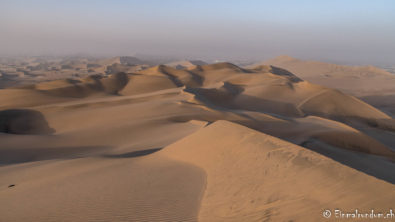
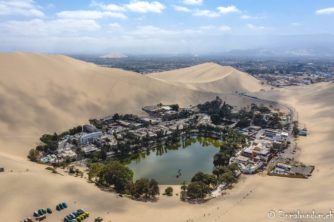
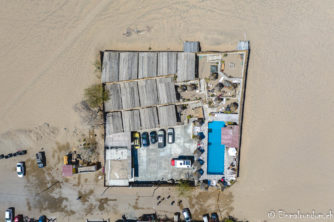
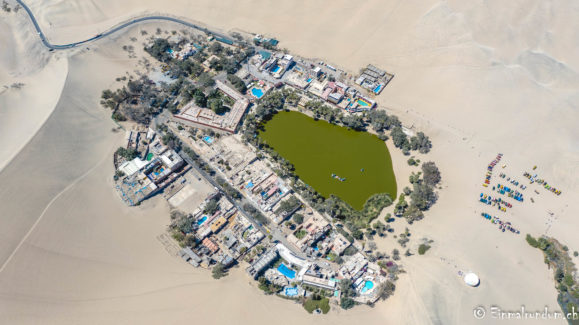
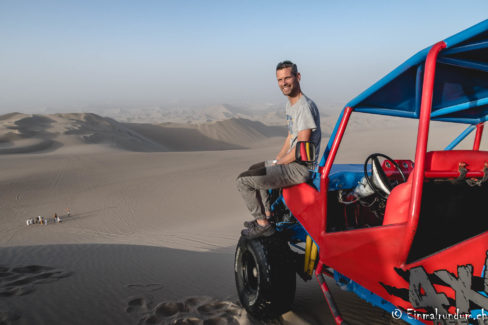
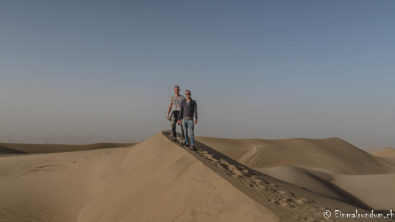
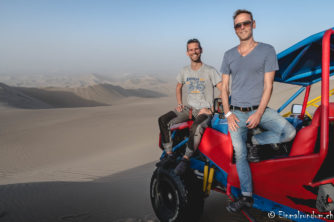
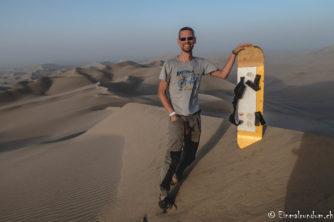

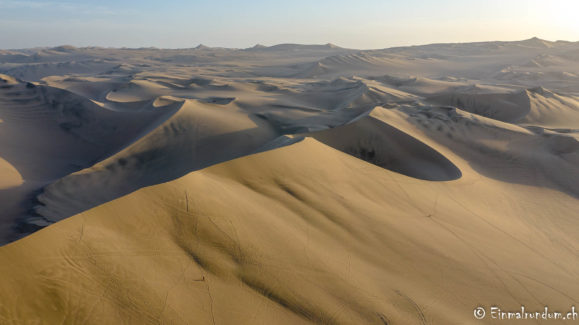
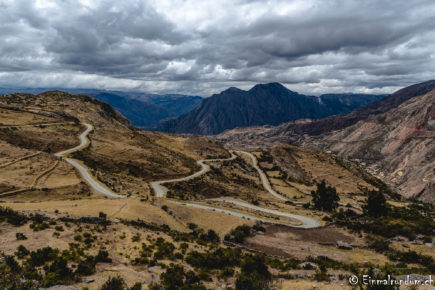
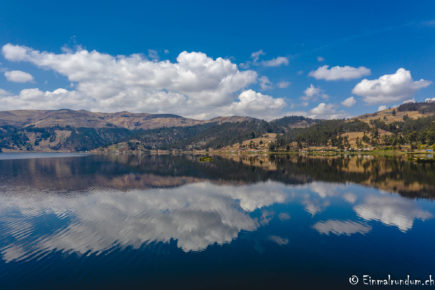
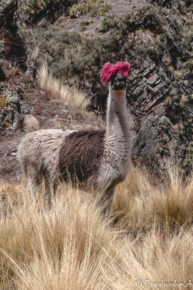
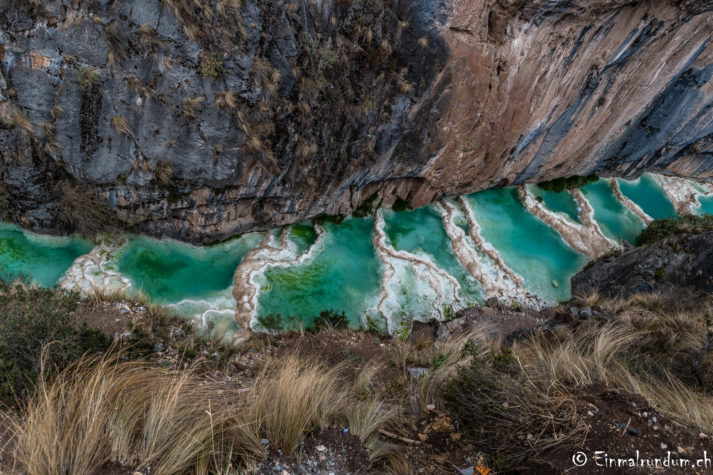
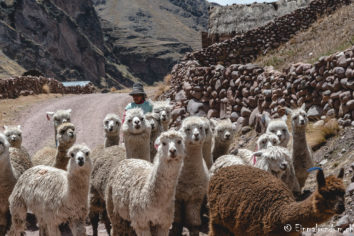
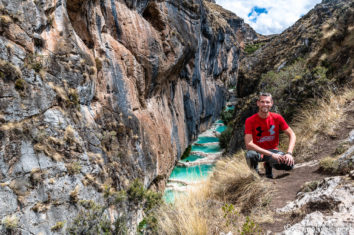
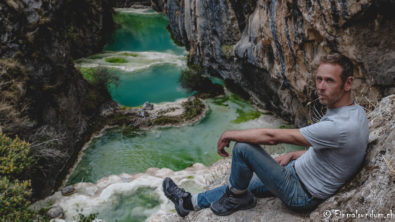
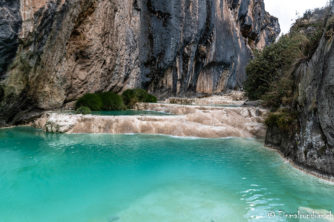
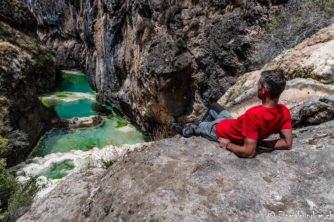
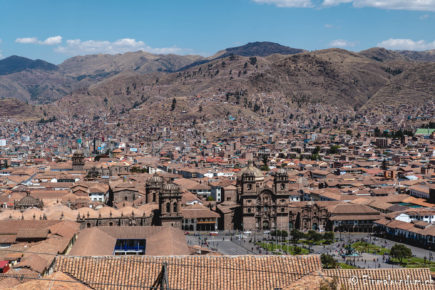
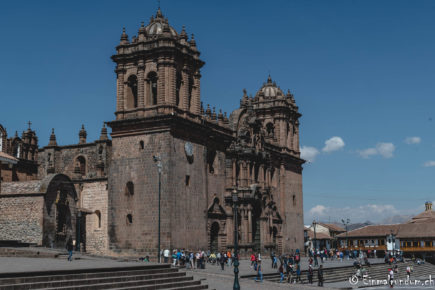
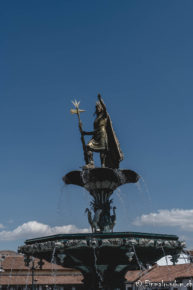
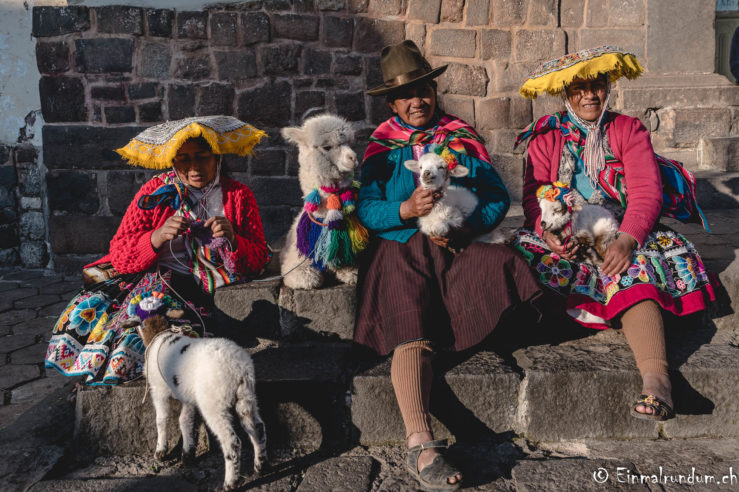
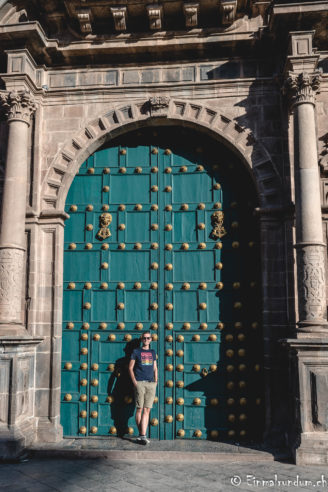
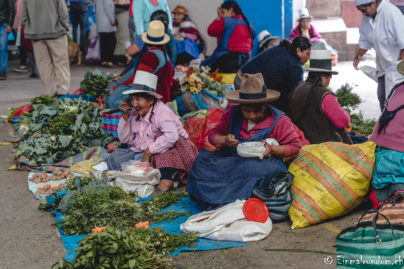
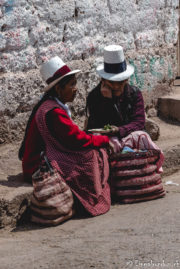
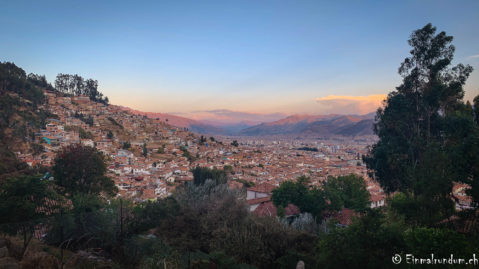
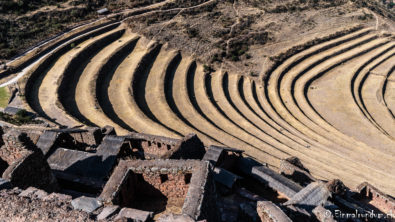
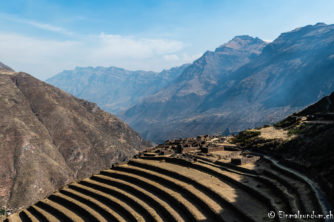
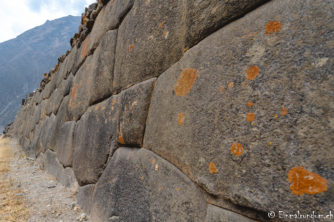
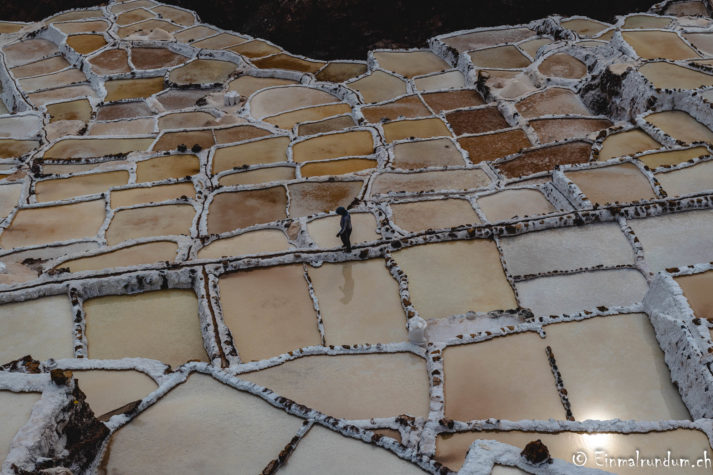
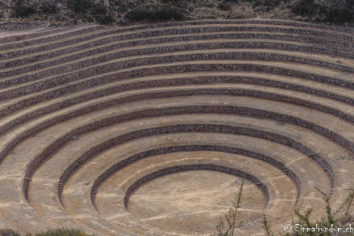
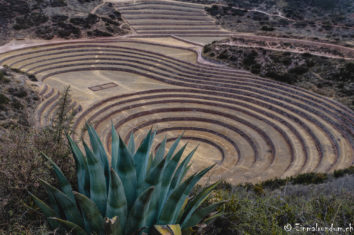
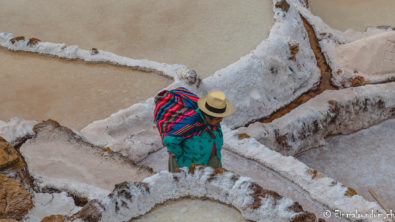
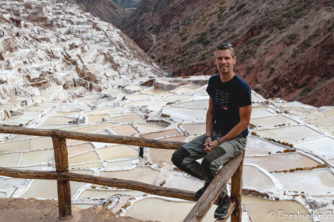
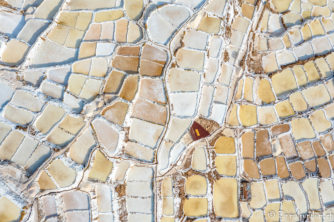
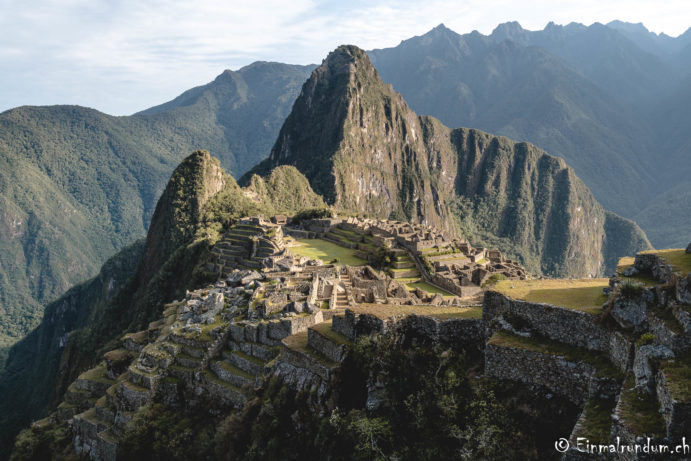
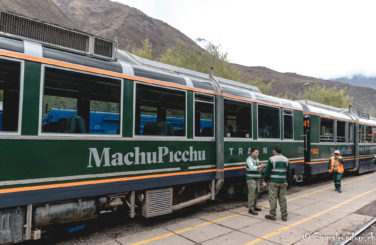
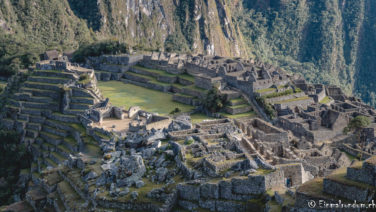
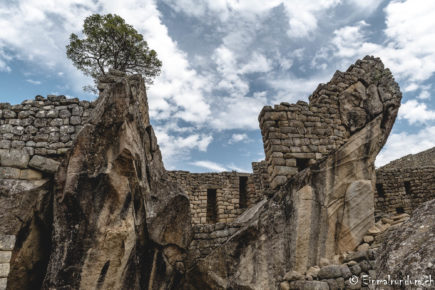
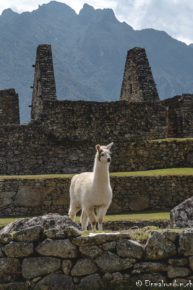
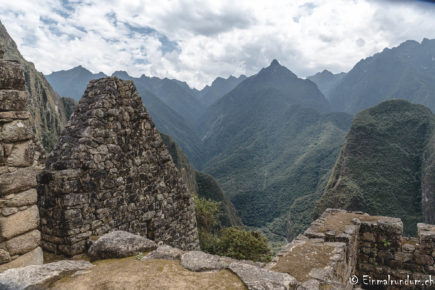
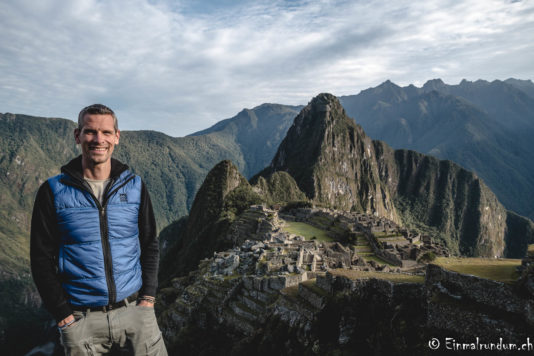
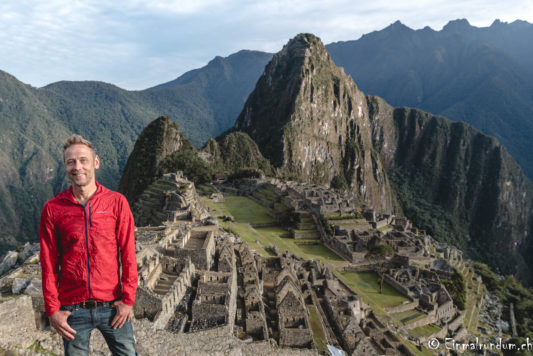
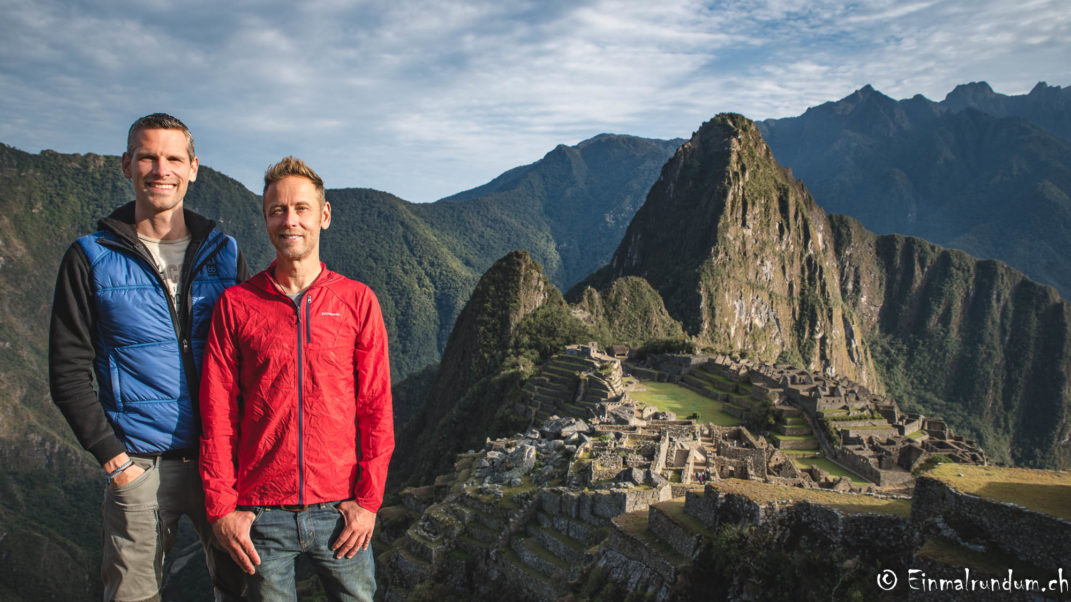
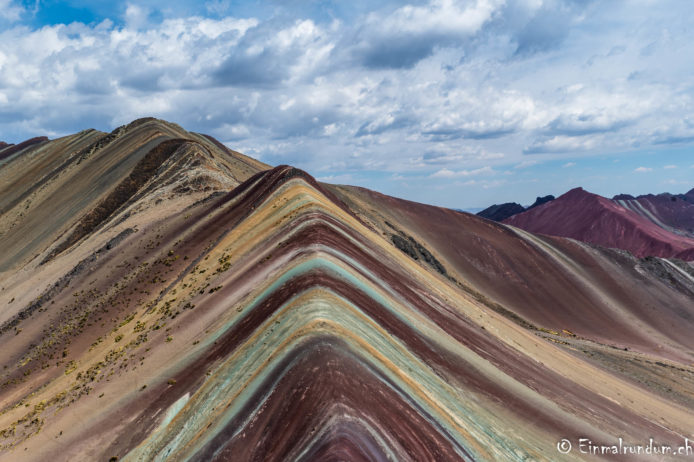
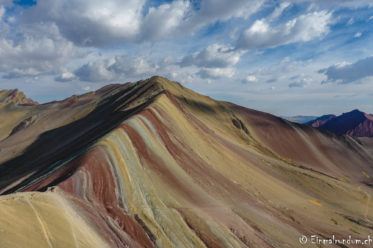
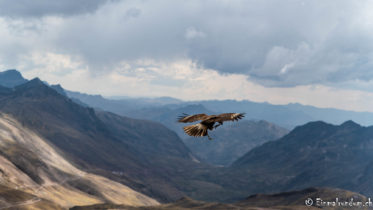
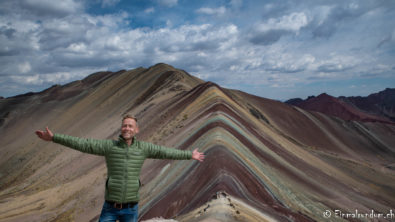
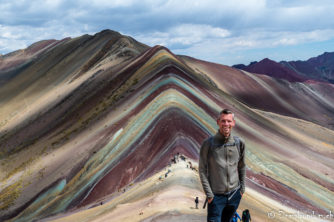
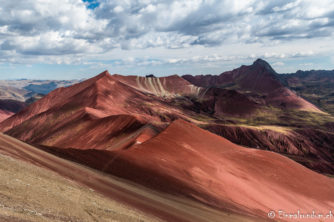
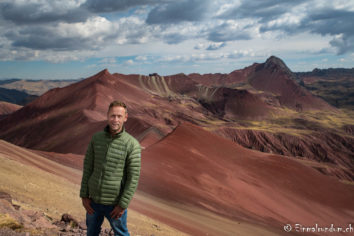
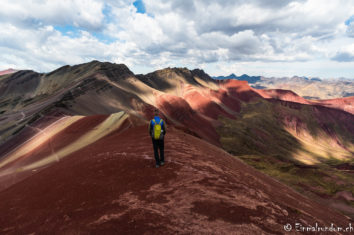
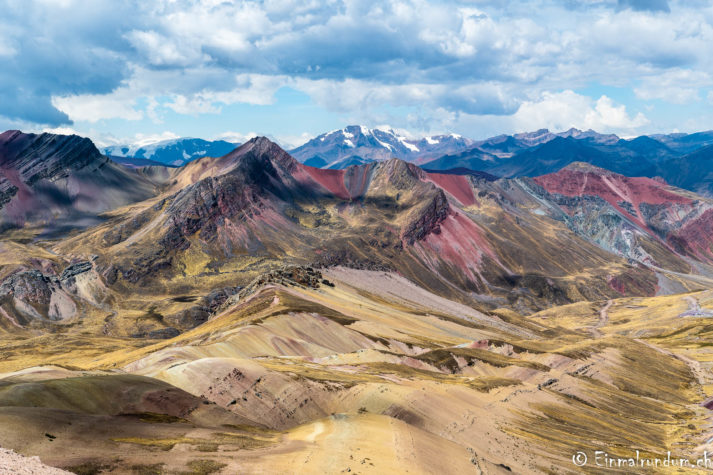
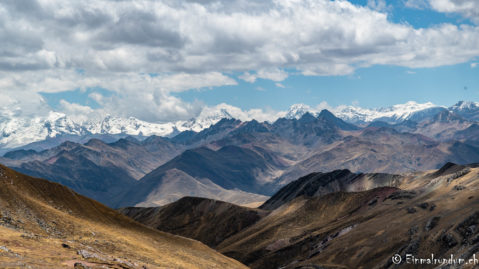
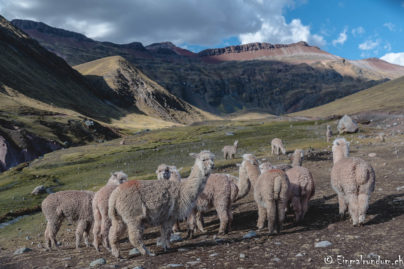
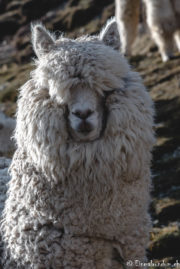
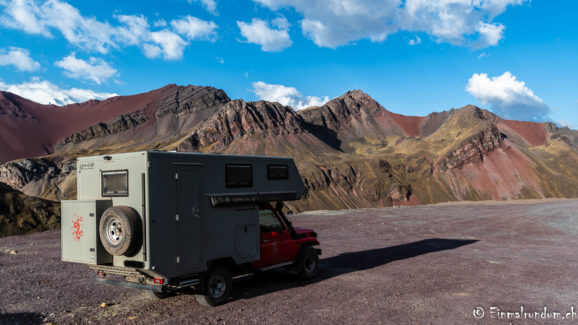
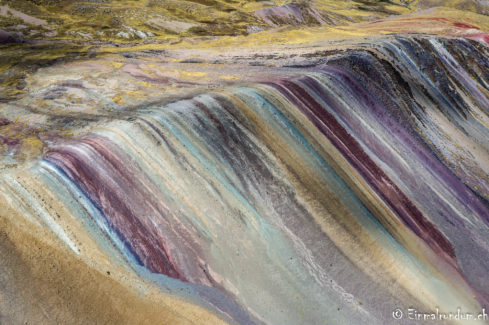
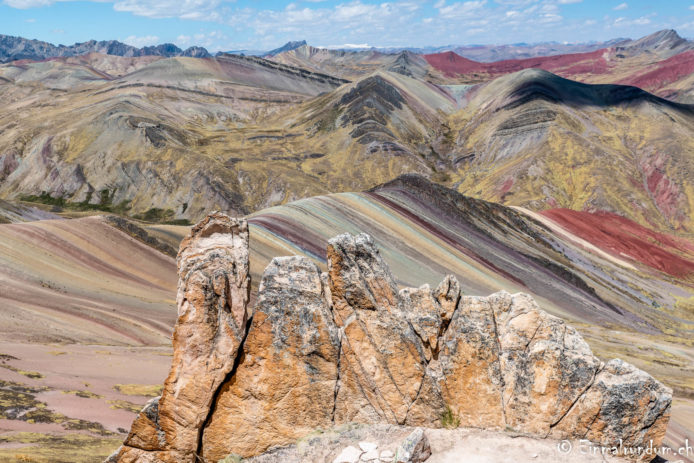
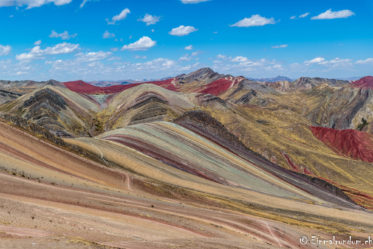
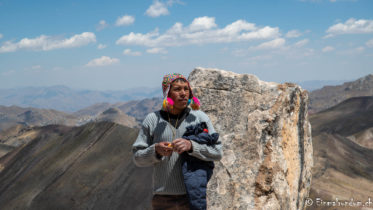
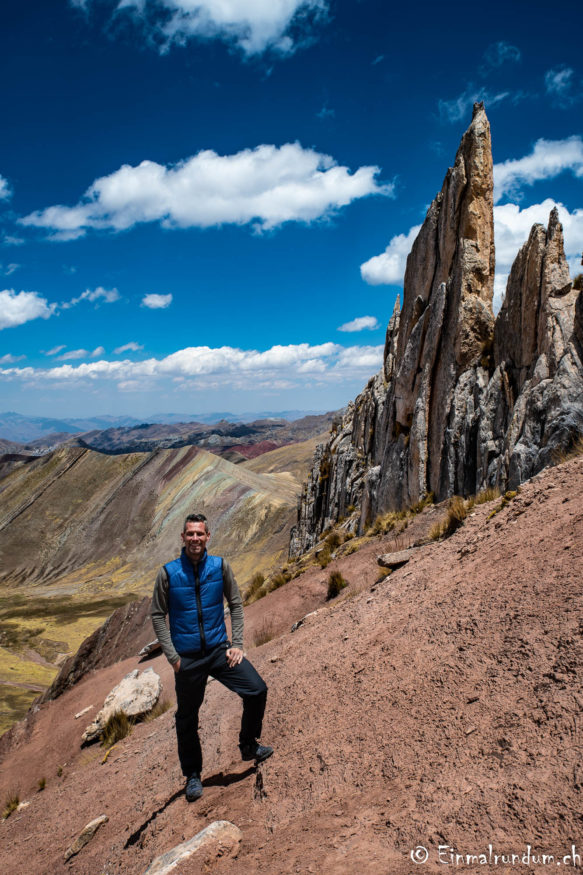
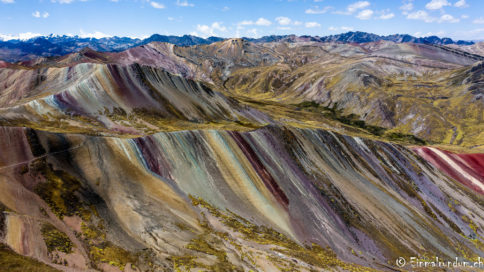
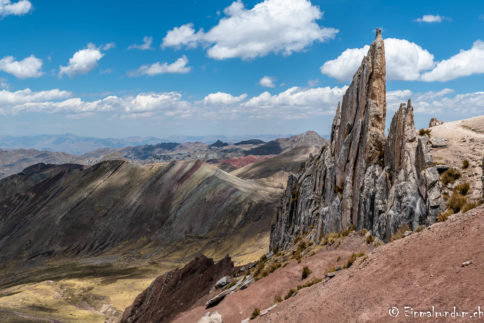
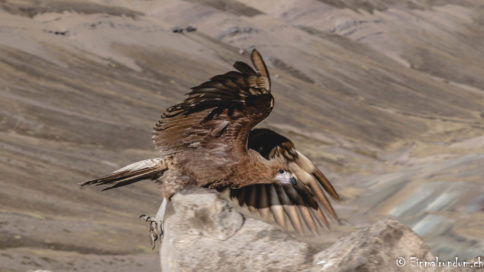
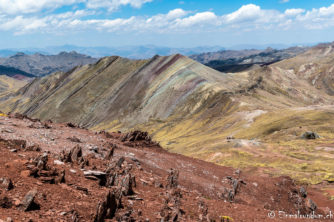
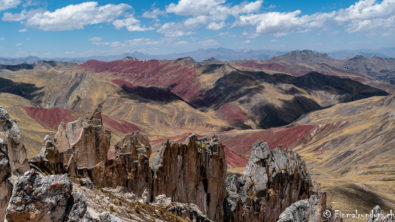
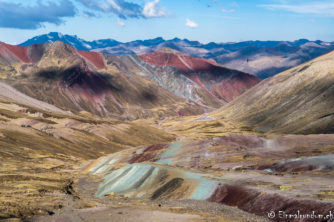
Hallo Ihr zwei, beim betrachten eurer Bilder und beim lesen eurer Berichte flammt das Fernweh immer wieder auf.
Es ist schön, durch euch informiert und inspiriert zu werden.
Eine gute Reise weiterhin, wünscht euch
Odilo
Hallo Odilo
Vielen Dank, das motiviert uns weiterzuschreiben 😉 Leider funktioniert deine Blog irgendwie nicht 🙁 Hätten gerne einen Blick darauf geworfen.
Liebe Grüsse & frohe Festtage
Thomas & Stefan
Hallo Ihr Zwei, das ist einmal mehr ein sehr interessanter Bericht und die Bilder dazu lassen uns träumen. In Gedanken sind wir oft bei Euch und wünschen Euch weiterhin eine gute Zeit.
Liebste Grüße aus dem kalten Basel
Andy&Margrith ???
Liebe Margrith und lieber Andy
Gerade diese Tage vermissen wir manchmal das Zuhause mit unseren Freunden & Familien aber was wir tagtäglich erleben dürfen kompensiert das Manko etwas… Wir schicken euch wärmende Sommersonne aus Südamerika und wünschen frohe Feiertage
Thomas & Stefan
Lagunen-Oase «Huacachina»: Hätt öich gärn uf em Brett dr Sandhügu gseh abefahre.
Bezüglich Lehrerkrankheit melde ich nichts mehr…..
Foto: ihr seid sehr fotogen, Daumen im Sack, FInger draussen aber auch ab und zu mit fliegenden Armen….
Wieder wunderbare Bilder! Merci
Hahaha, das Foto uf em Brätt hätt vor allem viel Stoub ufgwirblet 🙂 Und wahrschiinlich z’Ändi vor Kamera bedüütet :-O Lah dini Fantasie lah spiele und wahrschiinlich chunts nach a d’Wahrheit… 😛 Mir versueche üs witerhiin vor beschte Siite z’zeige – D’Summersunne hie in Südamerika hilft da derbi.
Hallo Jungs
Eifach geniau öi Föteli – und de erscht no mitemne Zug drufe!
Schöni Feschttag – aber das heiter jo fasch au Tag 😉
Urs & Priska
Hallo zäme
Danke viel mau! Stimmt, für einisch hei mir üses Mobil gäge e Zug iituuscht 🙂
Mir wünsche euch äbefalls tolli Feschttäg und e guete Rutsch!
Liebe Gruess
Thomas & Stefan
Hallo Ihr Zwei,
überwältigende Bilder wieder. Und die Regenbogenberge sehen unwirklich aus, wie Fantasie.
Einfach toll. Dann weiterhin buon viaje y mui feliz.
Viele Grüße von Petra
Liebe Petra
Vielen Dank und ja, die Regenbogenberge waren einfach unglaublich und jeden atemraubenden Schritt in der Höhe wert!
Sonnige Grüsse & frohe Festtage
Thomas & Stefan